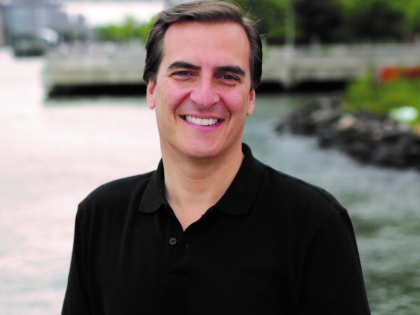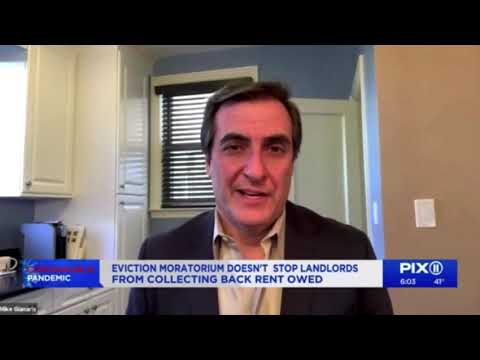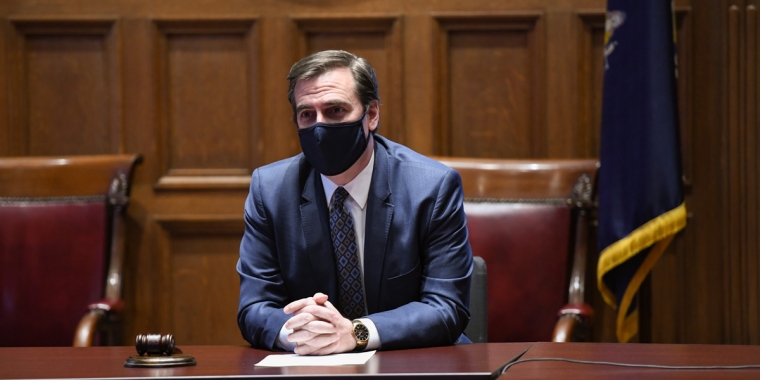
CityLab: A Growing Movement Takes on the Mega-Development

Artist Jenny Dubnau has watched with heartache over the last ten years as her beloved neighborhood of Long Island City, a riverside Queens community once dominated by small manufacturing businesses, became engulfed by a wave of luxury developments. Gone were the street cart storage facilities and stone-cutting businesses that she walked by every day on the way to her artist studio, replaced by towering glass skyscrapers just across the river from Manhattan. She expected it was only a matter of time until she, too, would be priced out.
“All these developments were causing the rents to go so insane, so I became an anti-gentrification activist,” she said.
Unable to prevent the loss of her studio, Dubnau became part of the movement that eventually deterred Amazon from its plans for a headquarters in Queens. Now that movement has pivoted to stopping another mega-development project slated for western Queens. It’s a proposal that, on the surface, isn’t such an obvious target for opposition: The Sunnyside Yard plan has been billed as a “utopian” vision by some, with an emphasis on public amenities and transit, and a plan to host the city’s largest planned affordable housing community in decades.
But fueled by national racial justice protests and economic decline — and emboldened by the movement that forced Amazon to retreat from the borough — a growing group of activists and lawmakers are unconvinced by the glitzy packaging of even the most progressive-sounding of development plans.
The massive 180-acre Sunnyside Yard is currently an active rail yard, slicing across the topography of western Queens from the edge of Long Island City through several slightly less gentrified neighborhoods. With the silhouette of the glass-encrusted Long Island City skyline looming in the background, Sunnyside Yard serves as the metaphorical moat that contains the fast-paced development from spreading across the rest of Queens.
In early March, as New York just began to come to grips with the magnitude of the Covid-19 crisis, the New York City Economic Development Corporation (EDC) announced plans for the construction of a deck that would be placed over 85% of the active rail yard for new development. A massive undertaking, the project is estimated to cost between $16 billion and $22 billion.
Even as the pandemic throws the city into the depths of an unprecedented fiscal crisis, Sunnyside Yard’s master planner Vishaan Chakrabarti, founder of the Practice for Architecture and Urbanism, told Curbed in a recent interview that he remained optimistic about the plan’s future, going so far as to argue that the pandemic could be the catalyst for the construction of Sunnyside Yard.
“This is part of why you do master planning,” he said. “You don’t know something like this is going to happen. But it tees things up for the future.”
To supporters, the plan is a progressive, sustainable opportunity to set a different precedent for development. The master plan said it would prioritize new public transit options, and the development of “100% affordable housing.” If completed, the project would be New York City’s largest planned affordable community since the construction of Co-op City in the Bronx in 1973. Planners envision the construction of 12,000 units of housing, 60 acres of parkland, public schools and a new commuter rail station — all in a carbon neutral environment, and on land that didn’t exist before. Of the homes, at least 6,000 would be designated for very and extremely low-income New Yorkers, and the other 6,000 would be for affordable homeownership.
New York City Mayor Bill de Blasio called it “a tremendous opportunity to deliver on our vision of a more affordable city and smart development that responds to the needs of surrounding neighborhoods.”
The activists and lawmakers who oppose the project are skeptical that any mega-development proposal can serve the needs of existing residents. As the city emerges from lockdown, organizers have begun to mobilize against developers who are pushing ahead with rezoning applications for a number of mega-projects in the Queens neighborhoods of Astoria, Long Island City and Flushing.
“The grassroots groups in western Queens, which may also include the Flushing groups now, are pulling together to coordinate action against all large-scale private & luxury development in the area,” said Kristen Hackett, executive committee member of Justice For All Coalition.
Hackett says Sunnyside Yard is a “mismanagement” of funds that should instead be spent on needed investments like decaying public housing, transportation and schools in existing communities, rather than on building a neighborhood from scratch.
“Billions of dollars of public money are being allocated to deck over this project when public housing needs billions of dollars,” Hackett said. “This is a redirection of public money to create communities for wealthier residents rather than invest in communities that have already existed, that have been underfunded for years.”
She and fellow activists also argue that, despite their promises of affordable housing, projects like Sunnyside Yard will drive up surrounding property prices and increase displacement.
Chakrabarti, the master planner, didn’t respond to request for comment on these activists’ perspectives. But in comments to CityLab in March, he expressed a different vision for the role of public money.
“We have to recall the country that built projects like Hoover Dam and went to the moon,” he said. “Can we still think big and build things by the public, for the public? This is still a moon shot. But it’s the right moon shot.”
Grassroots organizations are joined in their opposition to the project by several lawmakers who were vocal opponents of Amazon’s proposed Queens headquarters, including U.S. Representative Alexandria Ocasio-Cortez and New York State Senator Michael Gianaris, both of whose districts include Sunnyside Yard.
“Western Queens is in need of serious investment, but not for more luxury development or ‘so-called’ affordable housing that isn’t actually affordable,” said Gianaris. “We must focus our public resources on truly affordable housing, transportation, health care and education, the pressing priorities of our community.”
This past February, Ocasio-Cortez publicly dropped out of the Sunnyside Yard steering committee, stating in an open letter: “Despite the many outreach meetings that you have cited, I have yet to see sufficient inclusion of the feedback from those meetings in the current plan. This feedback, both from community members and from my office, includes but is not limited to community land trusts, truly affordable housing, and public and green infrastructure of the scale necessary to meet our 21st-century housing and environmental justice challenges.”
A spokesperson for New York City’s Economic Development Corporation told CityLab that the Sunnyside Yard plan is an evolving project that is taking into consideration the voices and needs of the community at every stage of the development.
“The Sunnyside Yard master plan emerged from an extensive community engagement process and responds to feedback expressed by the community,” said the EDC spokesperson, Shavone Williams. “This includes a plan for the creation of the long-sought Sunnyside Station, 100% affordable housing with 12,000 homes, 60 acres of new open space, equitable homeownership opportunities and new infrastructure.”
But this current master plan is not necessarily the final word, he adds: “It is not a shovel-ready mega-development plan, but rather a long-term framework to guide decisions, which deliver on public goods that strengthen the neighborhood and the City. We’re committed to continuing our work with the community to build a strategic vision that can better serve local residents and all New Yorkers.”
Looking to past examples of New York City development, activists are distrustful of the commitments to incorporate the community.
Emily Sharp, an attorney and founder of the advocacy group Stop Sunnyside Yard, points to other recent developments like Brooklyn’s Atlantic Yards, where advocates say “affordable” units are still too expensive, as evidence that plans change despite city promises.
“It’s never going to be what it says it will,” she says. “This project is going to be 50 to 100 years in the making so who knows what will happen. What they showed us in the past is that they are not going to give us affordable housing.”
To Dubnau, the Economic Development Corporation “has become the archenemy of communities” over the last several years. “They seem to be at the helm of every bad rezoning and every major development project that harms communities.”
New York City Councilman Jimmy Van Bramer, whose district encompasses all of Sunnyside Yard, points out the practical limitations of some of the current promises for the project.
“While I appreciate the large amount of affordable housing contemplated in this visioning document, nothing in this plan requires a future administration to adhere to the same goals of affordability as this one,” he said in a statement to CityLab. “Any plan would have to go through a significant rezoning process that would ultimately require community review and city council approval. Up until that point, development in Sunnyside Yard, which may be decades away, is still a dream for some and nightmare for others.”



